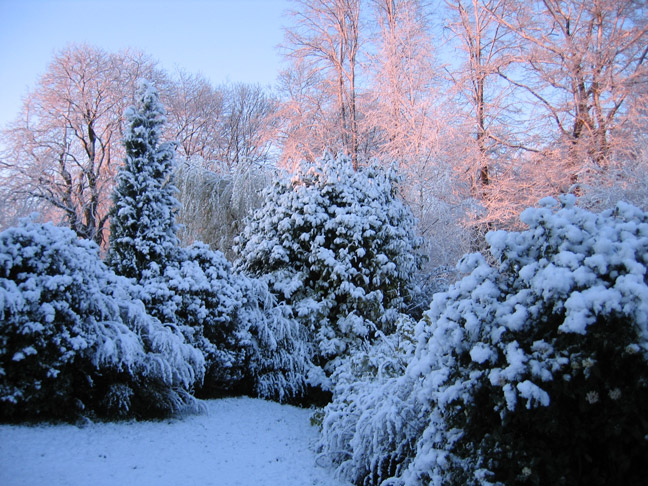The Tadpoles have Started to Hatch
Great excitement this week in the pond as the tadpoles have begun to hatch. The first signs of movement were detected on Wednesday morning. This was on the 2nd of April, just 17 days after the spawn was laid. Given the quite cold weather that we had been experiencing we were surprised how quickly the tadpoles developed. However, it is worth noting that despite the cold weather and the chilly pond water, the spawn had been laid in a central position in the pond and this allowed the spawn to get what sun there was for most of the day. Also, the jelly swells and becomes buoyant thus permitting the spawn to stay at the surface, again helping to warm the eggs. Sat on their bed of pond-weed (Elodea) the spawn has been fairly quick to develop.
The Latest Picture of the Frog Spawn

Picture Credit: Everything Dinosaur
Tadpoles Starting to Hatch
By Wednesday lunchtime, team members were taking turns to watch the spawn, every now and then a little tadpole would move slightly, either curling or uncurling. By Friday the movements had become stronger and more frequent. The embryos had assumed a more tadpole-like shape and could be seen moving inside the egg membrane.
The first hatchlings were observed on Saturday afternoon (5th April). The tadpoles have developed a definite head end (a round bulge) and a basic tail. However, it will be a few days before they are swimming freely.
At this stage, the muscular and circulation systems are developing, the gill arches either side of the head are now forming. The tadpoles hatch at around the time these gills are able to function. The eyes and mouth are not fully developed and there is an adhesive organ present on the top of the head. This permits the tadpole to attach itself to pond weed and remain there until further changes have taken place.
Spotting the External Gills
If you can get close enough and look very carefully at a tadpoles head from the top downwards (called a dorsal view by scientists), you should be able to see two small tiny bumps, one on each side of the head. These are the external gills and they should be visible for about 12 days or so. Over this period a fold of skin known as the operculum develops on the first branchial arch just in front of the external gills. It grows backwards until the external gills are covered. The eyes and mouth begin to develop.
The operculum does not close up completely, a single hole (called a spiracle) remains on the left side of the body. Water is taken in through the newly formed mouth, passes over the internal gills and is expelled through this spiracle. By this time the mouth should have developed definite jaws and the adhesive organ on top of the head should have almost completely disappeared.
The digestive system should have expanded (for the first few days after hatching the tadpoles live on the remains of the yolk from the egg – this can be seen as a bulge in their tummies). Soon the tadpoles will have acquired the ability to swim and they will have started their journey towards becoming frogs – metamorphosis.
Frog Observed
Only one frog has been observed in the pond during daylight hours. We think this is a male, it has been seen around the spawn and some of us have jokingly speculated that this might be the “expectant father” waiting for his babies to hatch. We know that many species of amphibian demonstrate some care for their offspring. For example, male Midwife toads (Alytes obstetricans) gather up the eggs once they have been fertilised and they carry them around on their back legs, but we are not aware of any paternal instinct being demonstrated by Common Frogs (R. temporaria).
Much of the country has been covered in a blanket of snow, this morning. Typical of the British weather, no snow in winter and then on the 5th April we get some. This picture was taken of the area behind the office this morning.
Oh to be in England now that April’s Here!

Picture credit: Everything Dinosaur






Just noticed my first batch spawn laid 18th March have hatched ..I have a later spawn but that had not hatched yet. Found an adult frog trying to mate with a goldfish ha.ha .I had to get the frog off the fish. Few years ago I counted 52 adult frogs in my pond.i rear tadpoles in another pond so they won’t get ate by fish. One year I had 12 batches of spawn…..I’ve been interested in amphibians all my life.